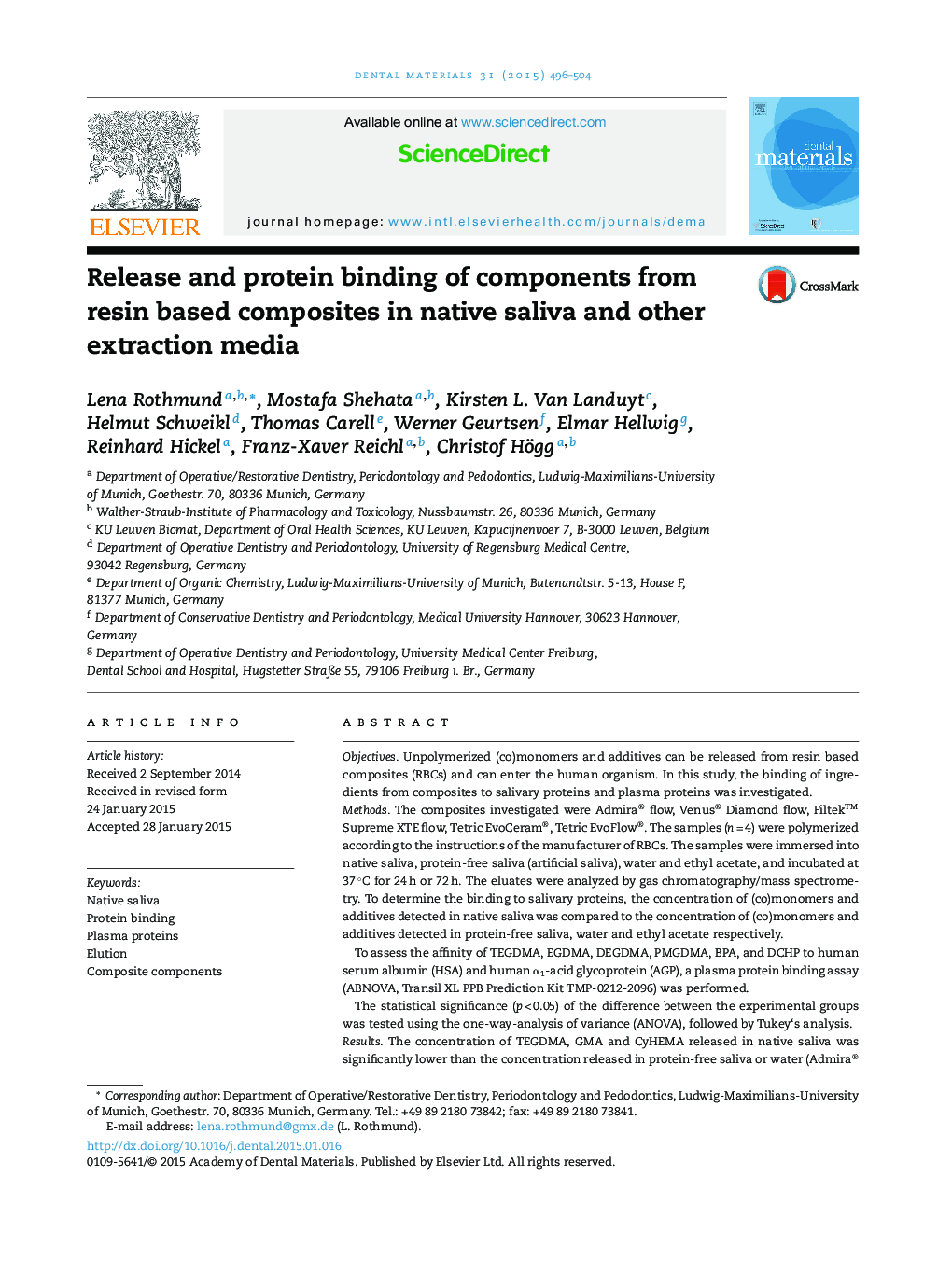| کد مقاله | کد نشریه | سال انتشار | مقاله انگلیسی | نسخه تمام متن |
|---|---|---|---|---|
| 1420675 | 986379 | 2015 | 9 صفحه PDF | دانلود رایگان |
ObjectivesUnpolymerized (co)monomers and additives can be released from resin based composites (RBCs) and can enter the human organism. In this study, the binding of ingredients from composites to salivary proteins and plasma proteins was investigated.MethodsThe composites investigated were Admira® flow, Venus® Diamond flow, Filtek™ Supreme XTE flow, Tetric EvoCeram®, Tetric EvoFlow®. The samples (n = 4) were polymerized according to the instructions of the manufacturer of RBCs. The samples were immersed into native saliva, protein-free saliva (artificial saliva), water and ethyl acetate, and incubated at 37 °C for 24 h or 72 h. The eluates were analyzed by gas chromatography/mass spectrometry. To determine the binding to salivary proteins, the concentration of (co)monomers and additives detected in native saliva was compared to the concentration of (co)monomers and additives detected in protein-free saliva, water and ethyl acetate respectively.To assess the affinity of TEGDMA, EGDMA, DEGDMA, PMGDMA, BPA, and DCHP to human serum albumin (HSA) and human α1-acid glycoprotein (AGP), a plasma protein binding assay (ABNOVA, Transil XL PPB Prediction Kit TMP-0212-2096) was performed.The statistical significance (p < 0.05) of the difference between the experimental groups was tested using the one-way-analysis of variance (ANOVA), followed by Tukey‘s analysis.ResultsThe concentration of TEGDMA, GMA and CyHEMA released in native saliva was significantly lower than the concentration released in protein-free saliva or water (Admira® flow: concentration of TEGDMA after 72 h: 0.08 mmol/L (native saliva), 0.34 mmol/L (protein-free saliva), 0.39 mmol/L (water)). The concentrations of HEMA, EGDMA, DDDMA and CQ released in native saliva remained even below the detection limit, compared to the other extraction media.Protein binding of the tested methacrylates to HSA + AGP was 82–85%, the binding of DCHP was 96.6%, and the binding of BPA was 95.2%.SignificanceArtificial saliva or water as extraction medium does not reflect the real physiological situation in the body. Salivary and plasma proteins may bind (co)monomers and additives and may thereby contribute to a lower bioavailability of leachables from RBCs in vivo than previously thought.
Journal: Dental Materials - Volume 31, Issue 5, May 2015, Pages 496–504
